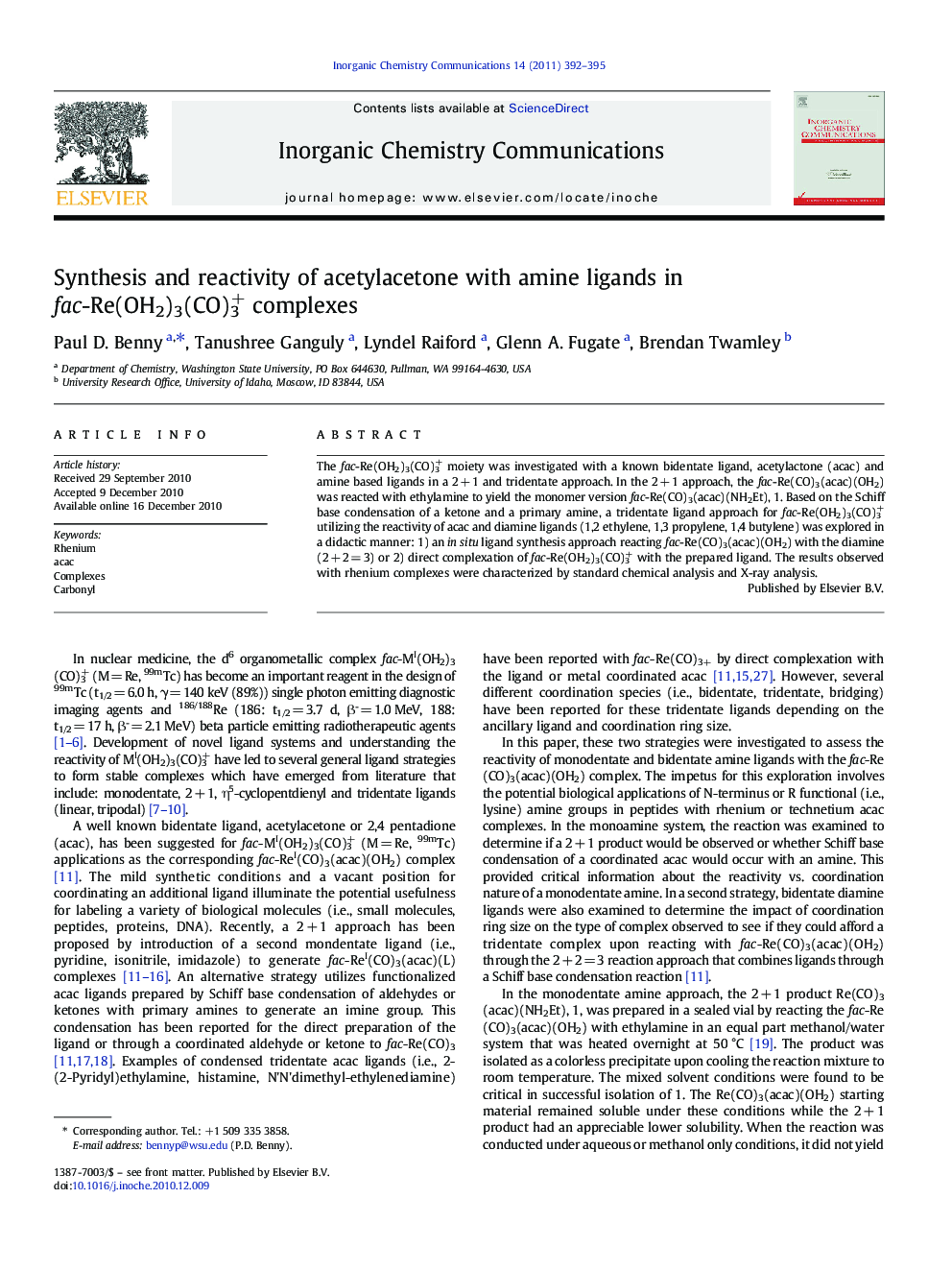| Article ID | Journal | Published Year | Pages | File Type |
|---|---|---|---|---|
| 1302810 | Inorganic Chemistry Communications | 2011 | 4 Pages |
The fac-Re(OH2)3(CO)3+ moiety was investigated with a known bidentate ligand, acetylactone (acac) and amine based ligands in a 2 + 1 and tridentate approach. In the 2 + 1 approach, the fac-Re(CO)3(acac)(OH2) was reacted with ethylamine to yield the monomer version fac-Re(CO)3(acac)(NH2Et), 1. Based on the Schiff base condensation of a ketone and a primary amine, a tridentate ligand approach for fac-Re(OH2)3(CO)3+ utilizing the reactivity of acac and diamine ligands (1,2 ethylene, 1,3 propylene, 1,4 butylene) was explored in a didactic manner: 1) an in situ ligand synthesis approach reacting fac-Re(CO)3(acac)(OH2) with the diamine (2 + 2 = 3) or 2) direct complexation of fac-Re(OH2)3(CO)3+ with the prepared ligand. The results observed with rhenium complexes were characterized by standard chemical analysis and X-ray analysis.
Graphical abstractThe fac-Re(CO)3+ moiety was investigated with a known bidentate ligand, acetylacetone (acac) to generate fac-Re(CO)3(acac)(OH2) followed by the introduction of amine based ligands in a 2 + 1 and tridentate approach.Figure optionsDownload full-size imageDownload as PowerPoint slideResearch Highlights► Denticity of amine based ligands impacts the type of complex observed. ► Re(CO)3(acac) with amine donors can form 2 + 1 or tridentate complexes. ► Amines coordination vs. Schiff base condensation.
